Regarding formaldehyde, I think everyone is no stranger. As one of the killers of home health, many people even talk about the word "formaldehyde". Therefore, more furniture manufacturers have declared that their furniture is "zero formaldehyde" in order to meet the needs of the public. Of course, because the wood itself contains a trace amount of formaldehyde, and the wood will use adhesives and other substances in the processing process, the furniture must be zero formaldehyde, basically just a legend. Then, someone asked, in addition to the traces of formaldehyde that the wood comes with, where is the other formaldehyde hidden in the furniture? Today, Xiao Bian takes everyone to look at the formaldehyde pollution sources of various types of furniture such as solid wood paint furniture and panel furniture.
Formaldehyde pollution source of solid wood paint furniture:
The solid wood paint furniture frame is solid wood. In most cases, the door panel is solid wood, but the side panels, partitions and back panels are mostly fingerboards, blockboards, plywood and other wood-based panels. Therefore, the formaldehyde pollution source of paint furniture comes from two parts: first, the artificial board without the paint; the second furniture has less paint inside, the paint film is incomplete, and the free formaldehyde in the artificial board cannot be completely closed, which is also a long-term pollution source.
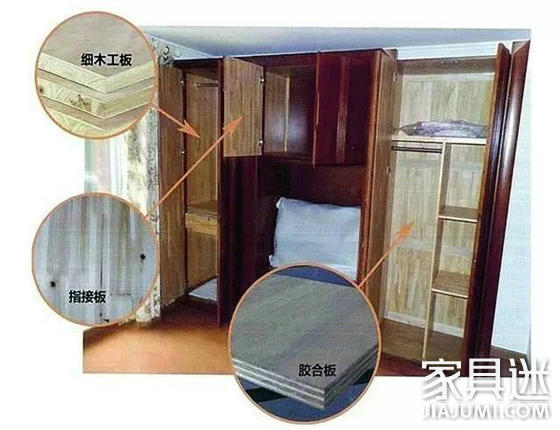
There is no long-term formaldehyde release on the outer surface of the painted furniture. The painting process of the outer surface (outside) of the paint furniture is: painting - sanding - repainting. Grinding makes the paint surface smooth and flat, and guarantees the integrity of the paint film sprayed here; and repeated spraying, multi-layer coverage increases the film thickness. The complete and multi-layer coverage of the paint film serves to completely seal the artificial board and isolate the release of free formaldehyde. Therefore, the free formaldehyde in the wood-based panel cannot be exerted from the outer surface of the paint furniture. Only a small amount of free formaldehyde released in the paint binder in a short period of time is generally completely released within 6 months.
Most paint furniture interiors are also sources of long-term formaldehyde pollution release , but the inner surface of the furniture (inside) has a small amount of paint and is rarely polished. The inner surface does not look shiny on the outer surface, and it feels rough on the touch, indicating that the paint film is incomplete, does not play a full sealing effect, can not completely close the formaldehyde release in the artificial board, and the free formaldehyde in the artificial board is fine from the paint film. The damage is volatilized and forms a pollution. Therefore, opening the furniture cabinet door often feels irritating, which is caused by the smell of paint mixed with formaldehyde pollution.
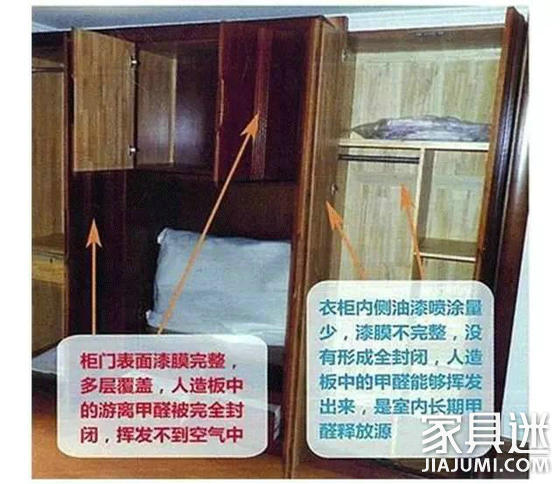
Plain boards that are not painted are the most polluted . The wood-based panel components that are not painted are the largest part of formaldehyde in paint furniture. Unpainted parts are often difficult to detect, such as the outside of the drawer, the inside of the drawer, the outside of the furniture back, the inside of the bed, the inside of the sofa, especially the inside of the furniture.
The most common wood-based panel components. The outside of the drawer floor of the paint furniture, the inside of the drawer box, the outside of the back panel, the outside of the roof panel, the outside of the floor panel, the inside of the bed box, and the outside of the bed box floor are the most common sources of long-term formaldehyde pollution. Some sources of pollution are listed in the figure below and are for reference only.
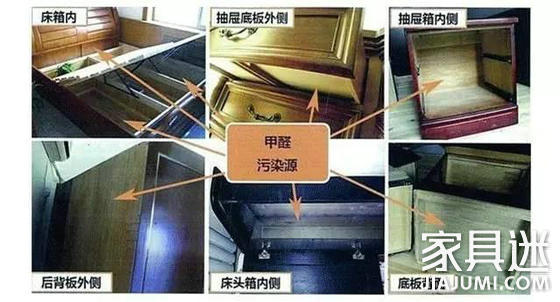
Formaldehyde pollution source for panel furniture
The most common panel furniture is the “customized wardrobeâ€. The custom-made wardrobe is a typical melamine panel home. Other common melamine homes include finished wardrobes, bookcases, beds, desks, dining tables, cabinets, computer desks, desks, etc. Wait.
Panel furniture structure: More than 90% of the panel furniture is made of melamine board. The melamine board is made of particle board (some are medium density fiberboard), with melamine veneer on the surface and PVC edge banding on the side. Therefore, the long-term formaldehyde pollution release source of melamine furniture is the particle board of the substrate.
"Particle board" is made by mixing urea-formaldehyde resin with water-dust. It is a kind of artificial board with a large amount of formaldehyde emission. It is rarely used directly. It must be skinned and edge-sealed (made into a so-called "paint-free board". ") is used indoors again, so although particleboard is a long-term formaldehyde pollution is a house, but if the quality of the skin material is qualified and the edge is tight, the free formaldehyde in the particle board can be basically enclosed in the board. Therefore, there are several cases of formaldehyde pollution sources for panel furniture:
First, there is no plain board with veneer veneer, which is common on the outside of the drawer bottom plate, outside the furniture back plate, outside the bottom plate, etc.; the second is not sealed, common in the household partition; the third veneer quality is unqualified , or the edge is not qualified. In all three cases, free formaldehyde in the substrate is volatilized into the air to form a pollution.
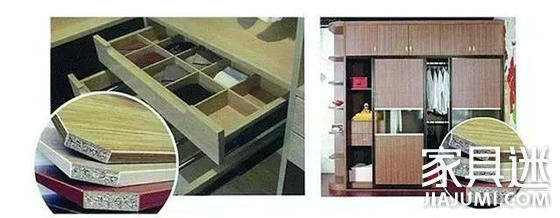
Formaldehyde in panel furniture mainly comes from three places:
There are no skin-finished particleboard, MDF, or sides without edges.
There is no veneer, most commonly on the outside of the drawer bottom (back), outside the back panel, other such as the outside of the cabinet bottom, part of the furniture inside the back panel (shown in the figure below "naked plain panel");
There is no edge banding, which is common on the inside of the drawer side panel and the liner on the lower side of the cabinet (as shown in the "exposed cut surface" in the figure below).
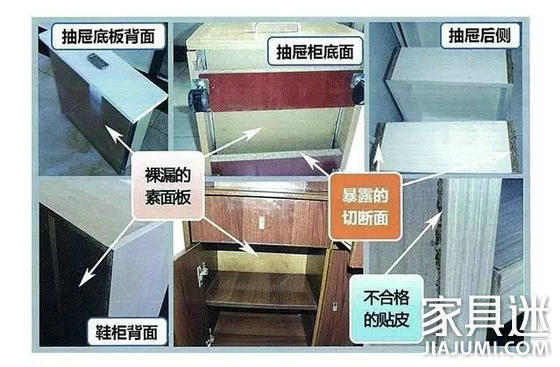
In addition, some workmanship is rough, or the melamine veneer uses inferior materials, which can not completely block the release of free formaldehyde from the particleboard, thus forming a long-term source of formaldehyde pollution, as indicated in the above figure, "Unqualified skin".
Thinner fittings in panel furniture, such as drawer floors, back panels, bed decks, cabinet back panels, etc. These thinner panels are often not melamine panels, but some are closed. Relatively poor materials do not completely enclose free formaldehyde in the MDF, resulting in long-term contamination.
However, the quality of the metal material of these panels is difficult to identify with the naked eye, so it is necessary to rely on testing to place the test box in these furniture. If the formaldehyde concentration exceeds 0.6 mg (test condition is: indoor temperature exceeds 33 ° C), Its facing materials are indeed problematic and are a source of long-term formaldehyde pollution.
It should be noted that plate furniture is often overlooked as a source of formaldehyde release - the wooden strips on the bed. The wooden slats fixed by the iron frame are slightly curved upwards. They are multi-layer plywood. They are the source of long-term formaldehyde pollution release. This is the furniture closest to the body. It must not be ignored as shown below:
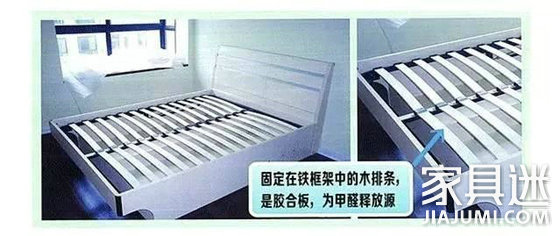
Note: Pure solid wood strips are usually single, placed directly on the bed box, without bending, and without frame fixing. Of course, not only the slatted bed uses such wooden slats, but also soft packs, European beds, and Chinese beds are often used.
Further reading: Formaldehyde or the number one killer in home decoration
Formaldehyde pollution source of European furniture
European-style furniture is gorgeous, and the color is mainly light-colored. High-grade European furniture is made of solid wood carving. Ordinary European furniture is pressed and formed by MDF, and then painted or painted. Therefore, European-style furniture is made of MDF as the base material, and the surface is sprayed with oil and gas. The most common ones are white, milky white and other light colors.
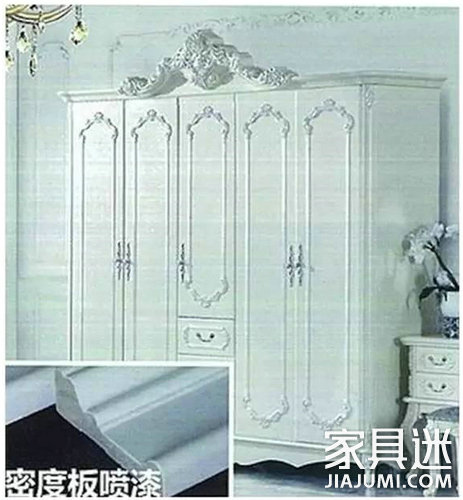
The long-term formaldehyde release source in European furniture comes from the urea-formaldehyde resin glue in the substrate density board. Therefore, the paint film is intact, and the outer surface of the furniture which completely blocks the free formaldehyde in the MDF does not cause long-term formaldehyde pollution, and only a short amount of formaldehyde in the paint is released in a short period (generally within 6 months).
The long-term formaldehyde emission source in European furniture is mainly on the inside of the furniture, especially the back of the bottom plate, the outside of the back plate (by the wall), the drawer box, etc., which are not particularly noticed by us. These places are not painted or sprayed. The amount is small, and therefore, the free formaldehyde volatilization in the MDF cannot be blocked.
The picture below shows a European furniture part, which is the back of the baking board. The back of this baking board is not painted, and the MDF board directly leaks. It is the source of free formaldehyde emission. The lacquer has a smooth, lacquer finish, as shown in the table on the left of the table at the top of the table.
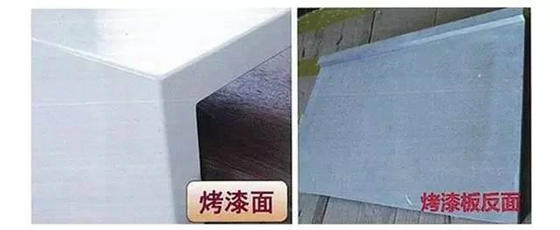
European furniture formaldehyde pollution source example: The following picture is the interior of the European coffee table cabinet. The front partition that can be seen by opening the cabinet door, the paint is relatively neat and complete, but the side that we are not easy to notice, the amount of paint sprayed is small, especially the cross section, the density of the MDF is very obvious. It shows that the paint here does not form a film at all, and the free formaldehyde in the MDF is volatilized from here to be a source of formaldehyde pollution.
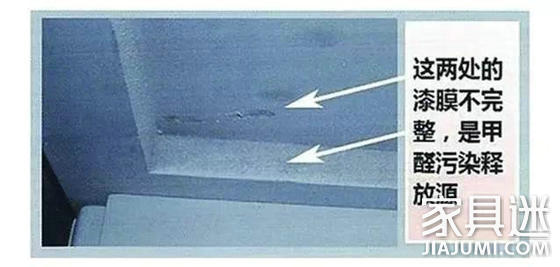
Example 2: This is a European multi-cabinet (pictured below). As you can see from the picture below, it is a white and bright cabinet.
Pull out the upper drawer and expose the inside of the drawer. You can see the inside of the top of the cabinet. It is a non-painted MDF (naked surface), which is almost the same as the "back side of the baking sheet" in the previous example. It is exactly the same. Similarly, the inside of the side panels is also the exposed surface without paint.
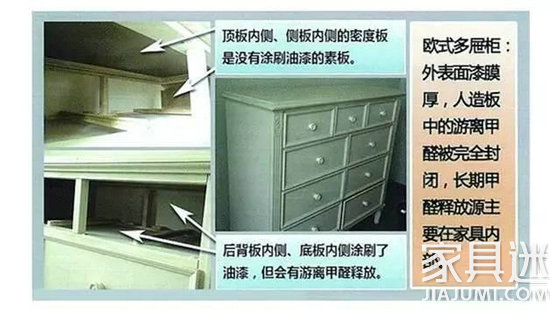
Looking at the back plate and the bottom plate, although the paint is sprayed, because the amount of paint is small, not only is there no gloss, but it is rough and flawless when it is touched. Obviously, the paint does not form a film. Therefore, the paint formaldehyde in the MDF will also be Play it out from here. Obviously, the inside of this chest of drawers is a long-term source of formaldehyde pollution.
In addition to solid wood paint furniture, panel furniture and European furniture, decoration furniture and soft furniture should also pay more attention.
The formaldehyde pollution source of furniture made by decoration:
The furniture made by decoration is mainly divided into two categories: one is the use of finger joint board (toothed board), blockboard (large core board), plywood (multilayer board, solid wood multi-layer board); Made of veneer or plywood (commonly referred to as "paint-free board" or "ecological board").
Furniture made of blockboard, plywood, finger joints, etc.
The inside of the furniture without any treatment is the largest source of long-term formaldehyde pollution. The outer surface of the furniture is treated with a decorative panel, or sprayed with paint. The interior of the furniture is not treated. For the exposed surface of the board, plywood and other plain boards, the formaldehyde volatilizes without any blockage. It is the largest source of long-term pollution control release. , the bed box and locker in the picture below.
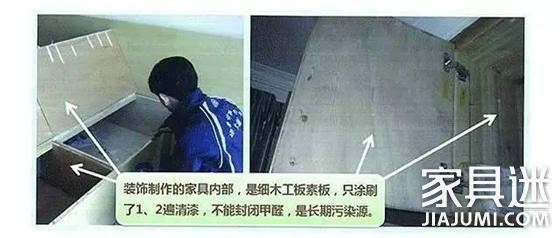
Some furniture is decorated with PvC decorative paper on the inside, but due to the poor PVC sealing effect, the high formaldehyde in the artificial board can still be volatilized. The PvC finish material is attached to the inside, and it is necessary to check whether it is a source of pollution. The indoor temperature is above 23 °C, and the test result in the furniture is 0.4-0.6 mg or more. It is undoubtedly a long-term source of formaldehyde pollution.
Tips: Finger-jointed boards are often mistaken for solid wood panels that are free of formaldehyde contamination. They are actually wood-based panels with relatively little formaldehyde pollution. The pressure plate has less glue than fine wood, and its formaldehyde emission is close to half of the blockboard.
Furniture made of paint free board
The furniture made of paint-free board is the same as the PVC veneer furniture, and it needs to be tested to verify whether it is a formaldehyde source.
In addition, the paint-free board has a “single finish†(only one side is decorated with a veneer, the other side is not attached, the plywood or wood board is directly exposed) and the “double veneerâ€. If it is a single finish, it is best to be renovated. Use a strong aldehyde removal agent to treat the side without the finish.
Formaldehyde pollution source in soft package furniture
Soft package furniture structure: soft package furniture includes fabric furniture, leather furniture, the most common of which is the fabric sofa. The outer surface of the soft-packed furniture is authenticity, artificial leather, or fiber cloth. The middle layer is generally sponge, or various fiber mats. The innermost layer is solid wood frame and wood-based panel.
The frame in soft-pack furniture is solid wood. In addition to the frame, there are linings in many places. The linings are generally made of wood-based panels, with multi-layer plywood, blockboard and MDF. Lining boards are generally not treated with veneers, so they are bare plain plates and are a long-term source of formaldehyde pollution. The wood-based panel linings are generally concentrated on the armrests, the backrest and other parts, and the tapping sound can be discerned.
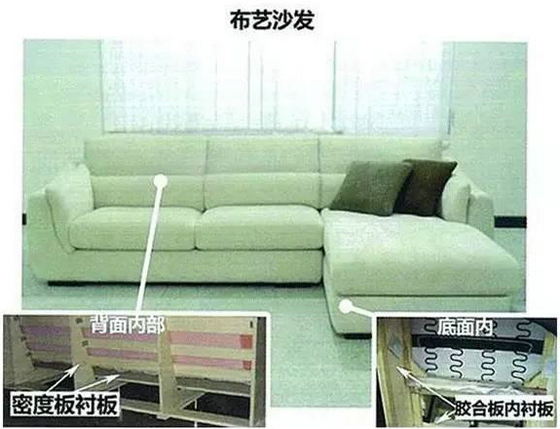
In addition, some sofas with storage functions, the use of wood-based panels is even greater, as shown in the above figure, the armrests are storage boxes made of blockboard and plywood, which is a long-term source of formaldehyde pollution.
Sit Stand Desk
Sit stand desk have become very popular. This series of office desk are very easy to use and perfect for any height and people. A good Standing Desk can minimize the harmful effects of sitting too long for bodies.
The good sit stand desks actually be beneficial to body's health who work on their computers all day.
Sitting and standing working style alongside taking breaks, getting your legs and spine moving, promotes healthy blood circulation and staying active in general – as well as alternating between sit and stand, these productivity stations can certainly make a difference.
We have many series of best height adjustable standing desk to help point you in the right direction. Whether you want something that's high-end and elegant, affordable, or a gaming desk, there's something on our products list to suit your comfort and wellness needs. We offer the best compuer desk, Electric Standing Desk, Height Adjustable Desk, Laptop Desk , Electric Gaming Desk, office exercise bike and an under-desk treadmill to make your work experience healthier.
Foshan Hollin Furniture Co.,Ltd is the leading supplier of metal and wood furniture. We are located in Foshan City China, well known as " the Hometown of Furniture".Our mission is to Improve Working& Study Environment and Enjoy Comfortable Life, we are specialized in Ergonomic Height Adjustable Desk: electric standing desk, Desk Converter, manual height adjustable desk, sit stand desk etc,.
Sit Stand Desk Frame, Sit Stand Desk Dual Motor, Electric Sit Stand Desk
Foshan Hollin Furniture Co.,Ltd , https://www.foshanhollin.com